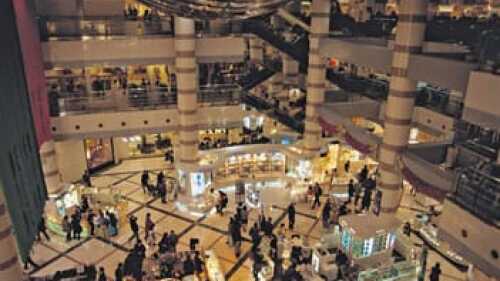The near-term prospects for retail development and financing seem to be healthier than expected, with an uptick in occupancy, according to members of ULI’s Commercial and Retail Development Councils.
Larger national tenants are looking to expand into more markets and infill locations, while urban community-oriented retailers are studying smaller formats that are able to adapt rapidly and are located in a limited number of places with an existing population. Greenfield projects are on the back burner until the housing market returns. Though capital is available, there is not much new development because of the numerous opportunities to purchase existing product such as empty big boxes, many of which have scaled back or gone out of business. As more troubled assets hit the market, pricing of new retail product will need to be attractive enough to take on the existing product. Cap rates for Class A properties have steadily moved lower, while those for Class B properties have stayed steady or risen.
Specialty centers are attracting a number of different demographic groups with discretionary income; analyzing in which markets those groups are located in order to give consumers what they want will become crucial. Current growth is coming from moderate-price retailers looking for locations with 15,000 to 40,000 square feet (1,400 to 3,700 sq m) of space. The focus now is on asset management, including creating attractive gathering places and green spaces, in order to hold current tenants.
Value retailers are overtaking upper-end lifestyle tenants. Wal-Mart, for example, has unveiled a smaller format—Wal-Mart Express—in order to compete with dollar shops and locate in big cities such as Washington D.C., and New York City. At 15,000 square feet (1,400 sq m), the Wal-Mart Express pilot store in Gentry, Arkansas, is about one-tenth the size of the company’s typical super center. Compared with the 125,000 items Wal-Mart carries in its traditional format, the Express version will have about 13,000 items and provide check-cashing and pharmacy services. Thirteen other pilot stores are expected to open later this year in Chicago and North Carolina, with hundreds of others to open during the next few years.
The most important demographic in the retail recovery will be generation Y. The enclosed mall format could actually prosper if it can lure smaller trendsetting and boutique stores and even department stores that can shift with changing tastes and provide an interactive experience and an exciting place to be seen. The most ethnically and racially diverse of the generations, gen Y is multicultural, plugged in, impatient, autonomous, and image, brand, and value conscious, according to a Pew Research Center report. For this group, Apple is king.
With financing for new development dried up, have public incentives to go green become irrelevant in the marketplace? Over the past two years, ULI researchers have surveyed green programs in 21 cities and counties to describe the variety of program policies, incentives, and requirements promoting green development. While many green projects are on hold, most programs remain in force in preparation for a renewal of development activity. The most ambitious green development programs continue to generate activity in Austin, Boston, Seattle, and Portland, Oregon.
Creating a profusion of new challenges for urban development practitioners is the unprecedented shrinkage of Detroit. Joining forces with foundations, nonprofits, and national urban development consultants, an aggressive new mayor is making a comprehensive assessment of the city’s health. The results will form the basis for immediate intervention and long-term planning. With more than 100,000 parcels of city land vacant, 3,000 vacant buildings are being demolished and another 10,000 are designated for removal over the next few years.
Detroit Mayor Dave Bing is exploring strategies for a more diverse, sustainable economy built on a solid core of industrial, commercial, and residential districts to help reinvent a smaller city—lessons that will come in handy as needs around the country continue to shift.





